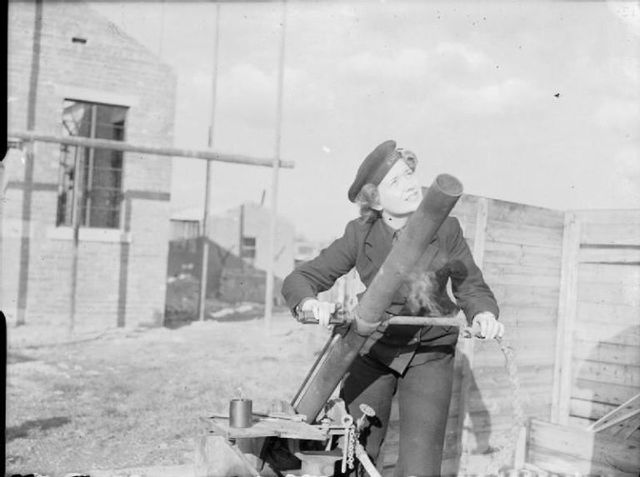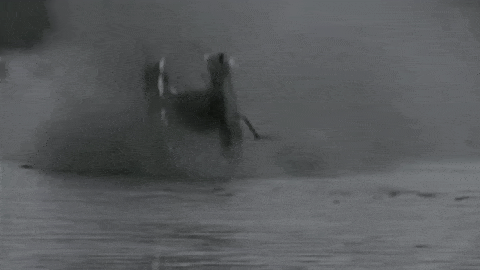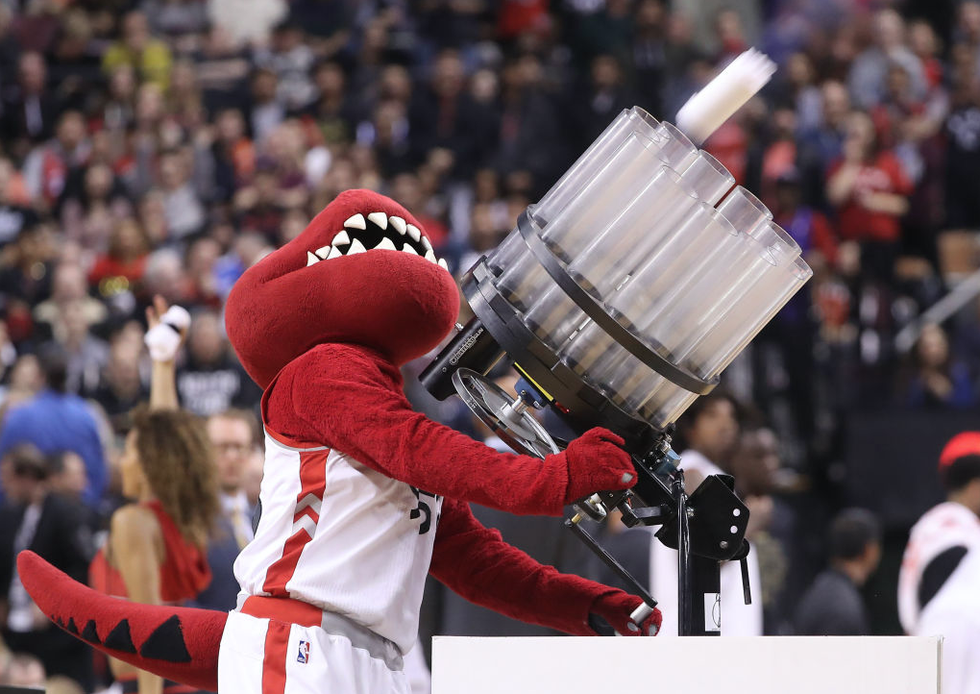The potato launcher, a beloved spud-flinging project for DIY tinkerers everywhere, is grandfather to most non-lethal gas-propelled armaments, like the paintball gun and the crowd-pleasing T-Shirt cannon.
And the reason for its popularity is obvious. Potato launchers are relatively easy to make, inexpensive, and dependable—with plenty of power and excitement packed in as well. The modern version is typically a combination of plastic pipe, pipe fittings, and a device that ignites flammable gas inside the gun's combustion chamber.
But the actual creation of the first true spud gun is up for debate. Some attribute its creation to the inventor of PVC, a material that would become central to the modern potato launcher. Others trace its origins back to Italian physicist Alessandro Volta and his "electric pistol." But its first modern form wouldn't take shape until some 160 years later in World War II Britain.
Organized as a top secret skunkworks by the British Admiralty in 1940, the Department of Miscellaneous Weapons Development—nicknamed the "Wheezers and Dodgers"—designed novel armaments for very specialized situations. Successful projects, like the ship-borne anti-submarine mortar called the Squid, would go on to be used by navies for decades. While others, like "The Great Panjandrum," were hilariously impractical.
As World War II progressed, shipboard anti-aircraft guns were reprioritized from commercial freighters to warships. Finding themselves unprotected against German aircraft, the sailors onboard these merchant ships desperately wanted some way of defending themselves. They needed something that would be much simpler and far less expensive than complex anti-aircraft guns. They didn't have military budgets, after all.
So the Wheezers and Dodgers invented a gun called the Holman Projector, the world's first true potato launcher. The Holman was a smooth bore, muzzle-loading gun connected by pipes to the ship's steam boiler instead of relying on gunpowder, which was always in short supply during the early days of World War II.
When a ship found itself under attack, the crew would pull the pin and drop a hand grenade down the barrel of the Holman Projector. Then, the gun crew would frantically aim at the enemy airplane and stomp on a pedal to release boiler steam. The rush of steam would propel the grenade at the aircraft, and if all went according to plan and the fuse timing was correct, knock it out of the sky. Eventually this simple-yet-elegant solution to a difficult problem drew some high level attention. Winston Churchill got wind of the Holman Projector and asked for a demonstration, which was hurriedly arranged at the British military base at Aldershot. Unfortunately, when it was time for the demonstration, the Wheezers and Dodgers discovered they'd forgotten suitable ammunition.
With Churchill waiting impatiently, the situation was salvaged when somebody on the team remembered the half dozen bottles of lager they had brought with them for a post-meeting picnic. The loader dropped a beer bottle into the muzzle. The first one exploded in the barrel but the remaining bottles scored direct hits on the target, amid sudsy, beery explosions of froth that delighted the Prime Minister.
"A very good idea, this weapon of yours," Churchill said.
Now officially greenlit, Holman Projectors were manufactured at the Camborne Works, a huge mining equipment factory in Cornwall, England, and installed on thousands of ships. The Holman did have limited success against attacking Junkers and Messerschmitts, but it became better known for its quirky off-label uses. Having a wide, smooth, unrifled barrel, the Holman could shoot nearly anything a sailor could fit inside it. Everything from cans to cabbages got a try, but the most popular makeshift ammunition was the potato.
There are numerous accounts of bored Allied sailors shooting russets at one another's vessels. A merchant sailor named Sid Kerslake, who perhaps held the Holman Projector in lower esteem than Churchill, wrote about his experience the device and its extracurricular uses in his book Coxswain in the Northern Convoys:
If the steam pressure applied to the projector wasn't correct, the grenade and its container had a nasty habit of just managing to climb out of the end of the pipe, and drop onto the deck where they separated, rolling about until they either exploded where they were, and fragmented amongst those of the crew who were panicking to throw them over the side, or in the sea out of harm's way if the crew had been successful in doing what they had set out to do. Most ships' crews found as time passed by that the best use for the Holman Projector was for throwing potatoes at chummy ships as they passed by them in a channel.
The Cornwall factory eventually closed in 2003, but the town museum still has two remaining Holman Projectors in its collection, maybe the only surviving examples. One of them looks very close to pristine condition, while the other is a battered war relic, heavily damaged in an engagement between the cargo ship Highlander and three German aircraft off the coast of Scotland near Aberdeen in 1940. The crew successfully shot down two enemy airplanes.
After World War II, it would take decades for the potato cannon to become a DIY sensation while other variants—like the beloved T-shirt launcher—wouldn't come around until mid-1990s.
However, when asked by The New York Times Magazine about his first experience seeing one of the very first T-Shirt cannons, the Denver Nuggets mascot replied that "it looked like it came from World War II."
He probably didn't know just how right he was.
















